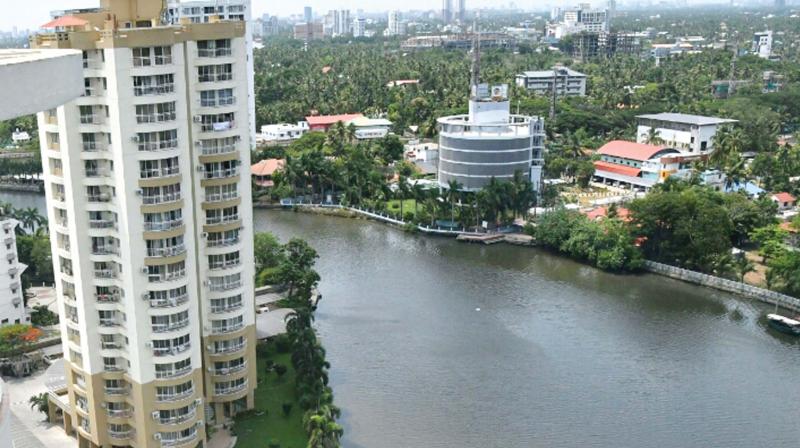is Kerala ready now?

Nine months have passed since the floods struck Kerala. Though the state was in the shadow zone of several natural disasters such as the tsunami of December 26, 2004 and Ockhi of 2017, the floods of 2018 exposed its vulnerabilities and the pitfalls of its disaster management system. The floods which created havoc and tension in Kerala were an eye-opener for the state to move ahead with greater consideration for environment with specific focus to develop a system for issuing proper advisories in future.
The scientific community working on management of floods and the ones responsible for predicting upcoming events raise serious concerns about a repeated question: are they moving in the right trajectory?
Flood modelling unit
The delay in starting a flood modelling and mapping unit in Kerala cannot be condoned. Numerical modelling is an efficient tool for estimating the past events and predicting the future ones. So our research, development and preparedness should move in that trajectory. For setting up such units, a lot of preliminary work has to be done so as to facilitate modelling outputs.
The preliminary work includes:
* Identification of vulnerable flood affected areas and their causative
*waterbodies/rivers
* Preparation of high resolution digital elevation on the banks of these rivers
* Fine resolution bathymetry of rivers
*Mapping of land use/land cover terrains
*Mapping of river bank structures
* Demarcation of administrative terrain
* Collection of ground water table
*Acquiring rainfall data in hourly resolution
*Inflows and outflows pertaining to river
*Locating hydraulic structures
*Trajectory and dimensions of rivers
*Flow conditions
*Collection of historical flood data
* Features of dams and their connectivity
* Knowledge about canal networks, tributaries and their draining pattern
* Channels of easy mitigation
The above mentioned data should be incorporated into computer models and simulations should be carried out trying several different permutations and combinations of all possible flood generating conditions.
The results of modelling should be stored in digital vulnerability maps and in the event of a possible flood arising condition, a nearest matching scenario should be picked from the above, based on which advisories and warnings can be issued for accelerating the mitigation efforts.
Lesson from Tamil Nadu
The Tamil Nadu government, with the help of various national and state institutes, has generated a Chennai Flood warning System so as to provide anything and everything about floods in the state and for facilitating easy mitigation. Similarly the work of Kerala Flood Warning System (K-FLOWS) should be started immediately with various stakeholders.
Funding agencies
So many young aspirants in the field of scientific research and development are willing to do these kind of high -end research but lack of funding stops them. The total expenditure of a project of this kind will be around Rs 1 crore. A prominent funding agency under Kerala government provides up to Rs 30 lakh only. The purchase of instruments such as GPS, echosounder and tools like matlab, GIS and numerical models cannot be done with this money.
At this juncture, collaborative research with various national and state institutes should take the lead.
24/ 7 warning centre
Cyclone Ockhi convinced everyone on the urgent need to establish a 24/7 state of warning centre for disasters, with special focus on ocean-related ones. The efforts of ministry of earth sciences, Government of India, in the setting up of a cyclone warning centre in Thiruvananthapuram should be appreciated. But we don’t have a research and development institute exclusively doing this job in Kerala for several natural disasters.
The Indian National Centre for Ocean Information Services (INCOIS) based in Hyderabad is functioning effectively since its inception with good advisories and ocean state forecast.
Many scientists from Kerala are working in this institution in key posisitons. In Kerala we looks up to institutes outside Kerla in the event of a disaster for warning and we indulge in copy paste communication.
The government /media/ stakeholders/bureaucrats should try to install a branch or a core group of national institutes in India exclusively to meet the need of the hour and to perform as a warning centre with specific reference to the state of Kerala. Besides, the natural disaster should be grouped and a peer team comprising scientists, subject experts, new researchers and management people should be constituted under our state government with immediate effect.
The basic requirement is the creation of special task rescue forces in each district with all possible basic amenities and resources to address any heterogeneous potentially worst- case disaster scenario.
Hope our stakeholders will act swiftly for a safer Kerala.
(Dr. Praveen Sakalya is a former project scientist with the National Centre for Coastal Research (NCCR), Government of India, and currently assistant professor in physics at St Thomas College, Kozhencherry).

